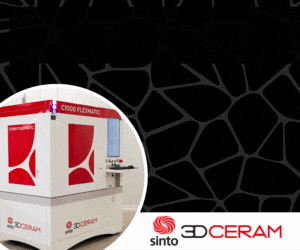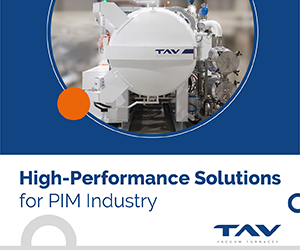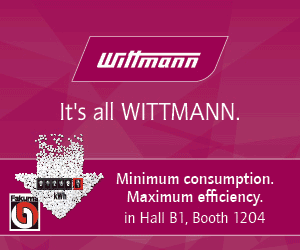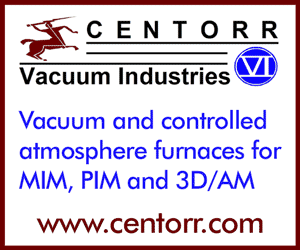MIM Moly caps find success in microwave ovens
March 12, 2011
Molybdenum (Mo) is widely used as an alloying element in steels and high alloy steels. Its outstanding electrical and heat conducting capabilities also sees the use of PM Mo and Mo alloys for a range of applications in the electrical and electronic sectors, and for resistance elements in electric furnaces capable of operating at temperatures up to 2200°C.
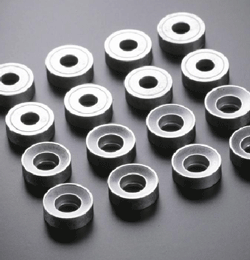
Fig. 1 MIM molybdenum caps are used
with supporting Mo rods in the magnetron
tube of microwave ovens. (Courtesy Xiamen
Honglu Tungsten Industry Co Ltd)
Most of the Mo components are produced by machining of wrought PM semi-products. Xiamen Honglu Tungsten Molybdenum Industry Ltd in Xiamen, China, has now successfully adopted the metal injection moulding process to produce a complex shaped Mo cap. Jiupeng Song in a presentation at PM2010 in Florence, reported that the Mo cap is used together with a Mo supporting rod as the core component of a magnetron tube in microwave ovens. The rod and cap support the magnetron coil which operates at temperatures up to 2000°C, and prevent microwaves from dispersing axially.
Jiupeng Song outlined the Mo powder production process used for the successful application of the MIM caps. He stated that the conventional chemical reduction of MoO3 to produce fine Mo powder was not suitable for the MIM process because of the particle shape and resulting poor flowability of the powder.
The company therefore developed a special chemical reduction process which, when combined with a jet milling step, produced a very fine, rounded shape and deagglomerated Mo powders of high purity and relatively uniform particle size (D50 = 2.7µm) with a tap density of 4.35 g/cm3. This was the highest tap density of the Mo powders evaluated which included imported grades EM FM1 from Climax, USA, and MMP II from H.C. Starck, Germany (Table 1). The company used a wax-polymer binder containing 51 wt.% paraffin wax, 30 wt.% polypropylene, 16 wt.% polyethylene, and 3 wt.% stearic acid for the MIM feedstock using the jet milled Mo powders, said Jiupeng Song.

Table 1 Characteristics of the various Mo powders evaluated for use in the MIM caps (from paper by Jiupeng Song etal., published in Proceedings of PM2010 World Congress, Florence, 10-14 October)
Jiupeng Song reported successful injection moulding with a critical solid loading of 62-64 vol% in the feedstock. Injection moulding was done in an 8-cavity mould using an Arburg Allrounder 360S moulding machine. The moulded Mo parts were debound first by solvent debinding in heptane at 37°C followed by thermal debinding at up to 900°C in nitrogen, and then sintering in hydrogen at 1700°C. Sintered density of the MIM Mo caps was said to be 98% with a low carbon and oxygen content of 8ppm and 10ppm respectively. Nearly all the grains of the high purity (>99.95% Mo) sintered MIM parts were found to be less than 10µm.








